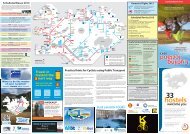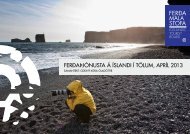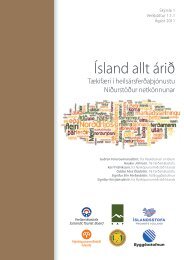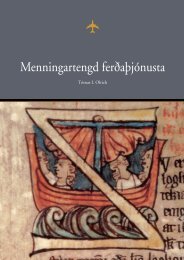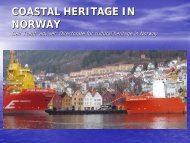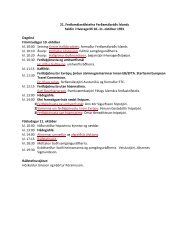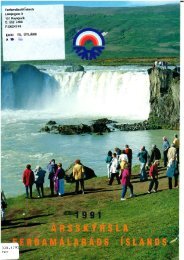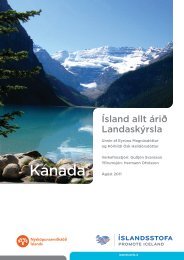Untitled
Untitled
Untitled
You also want an ePaper? Increase the reach of your titles
YUMPU automatically turns print PDFs into web optimized ePapers that Google loves.
this particular notion of a purified social that exists on its own has been<br />
critiqued. Various attempts to formulate and develop alternatives have also<br />
been made. The core of this alternative argumentation is that there is,<br />
strictly speaking, no such thing as a social sui generis. Instead, the social<br />
ought to be theorised as more or less always involving also various nonsocial<br />
phenomena, for example; technology, material artefacts, or even that<br />
which has traditionally been conceived of as the other of the social, namely<br />
so called “nature”.<br />
In a similar vein, it can now be argued that there is no such thing as<br />
tourism sui generis either. Everywhere we go we will find that tourism and<br />
tourists are neither purely social nor separately existing phenomena. They<br />
are always surrounded by various non-humans, be it aeroplanes, tickets,<br />
restaurants, museums, roads, or beverages. In principle, then, everything<br />
we might distinguish as tourism or touristic may well be equally regarded<br />
as belonging to something else.<br />
Yet, in spite of this parasitic nature of tourism, as earlier discussed,<br />
the task of tourism theory is also to bring forth a common theoretical<br />
ground by drilling down its own conceptual pillars. In the next section we<br />
will outline some essential requirements tourism theory needs to cover in<br />
principle.<br />
An essential tourism trinity with a geographical twist<br />
As we conceive it, any tourism theory that aims to understand and explain<br />
tourism and tourists would at least have to include the three interrelated<br />
essential factors of ability, mobility and motivation. These factors are<br />
certainly not exhaustive and do not cover every aspect and realm of what<br />
tourism theory can and needs to address. They do, however, articulate a<br />
minimum ontological skeleton of tourism onto which other factors may be<br />
added, depending on particular research needs and theoretical preferences.<br />
Breaking the ability, mobility and motivation triad into its<br />
component parts we see that in order for tourism to occur, people first have<br />
to have an ability to move from here to there, be it near or far. In tourism<br />
theory this has traditionally been understood and explained with reference<br />
to time and money as those basic factors enabling or constraining the<br />
ability to travel. According to historical accounts of the development of<br />
tourism most people (the rich and the privileged excluded) did not have,<br />
prior to the age of modern mass tourism of the 20 th century, enough free<br />
leisure time available to spend on going somewhere outside their home<br />
39



